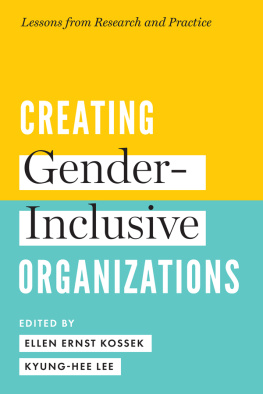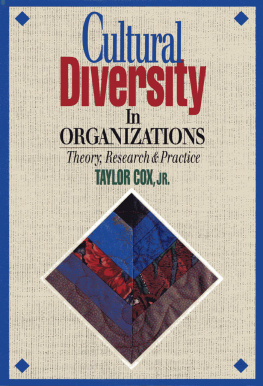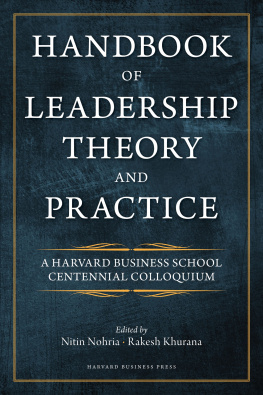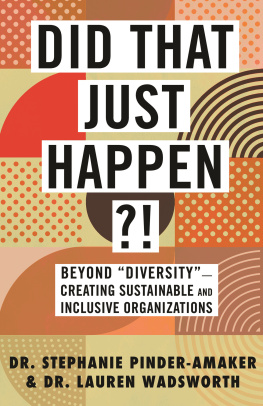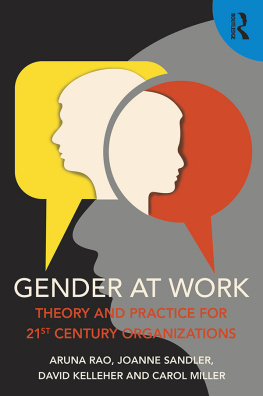
CREATING GENDER-INCLUSIVE ORGANIZATIONS

University of Toronto Press 2020
Toronto Buffalo London
utorontopress.com
Printed in the U.S.A.
ISBN 978-1-4875-0373-4 (cloth)
ISBN 978-1-4875-1861-5 (EPUB)
ISBN 978-1-4875-1860-8 (PDF)
Library and Archives Canada Cataloguing in Publication
Title: Creating gender-inclusive organizations : lessons from research and practice / edited by Ellen Ernst Kossek and Kyung-Hee Lee.
Names: Kossek, Ellen Ernst, editor. | Lee, Kyung-Hee, 1972 editor.
Description: This book includes a summary of remarks and essays by thought leaders who spoke at the inaugural Leadership Excellence and Gender in Organizations Conference held at Purdue University organized by the Krannert School of Management and the Susan Bulkeley Butler Center for Leadership Excellence. Foreword. | Includes bibliographical references.
Identifiers: Canadiana (print) 20200152289 | Canadiana (ebook) 20200152335 | ISBN 9781487503734 | ISBN 9781487503734 (cloth) | ISBN 9781487518608 (PDF) | ISBN 9781487518615 (EPUB)
Subjects: LCSH: Diversity in the workplace. | LCSH: Women Employment. | LCSH: Sex role in the work environment. | LCSH: Leadership in women. | LCSH: Career development.
Classification: LCC HF5549.5.M5 C74 2020 | DDC 658.3008 dc23
University of Toronto Press acknowledges the financial assistance to its publishing program of the Canada Council for the Arts and the Ontario Arts Council, an agency of the Government of Ontario.

CONTENTS
This book includes a summary of remarks and essays by thought leaders who spoke at the inaugural Leadership Excellence and Gender in Organizations Conference held at Purdue University, organized by the Krannert School of Management and the Susan Bulkeley Butler Center for Leadership Excellence. The Susan Bulkeley Butler Center for Leadership Excellence was founded at Purdue in 2004 to be a catalyst for developing women in leadership roles and enhancing an understanding of women and work.
For two days in March 2016, we heard about gender gaps in career equality at the inaugural Leadership Excellence and Gender in Organizations Symposium. We also heard about strategies to promote gender equality, diversity, and career success. We were continuing a journey that began at Purdue eighty years ago. In 1935, Purdue held its first-ever conference on womens careers. We had just over 6,500 students 986 of them women. At that time, a questionnaire was sent to all Purdue women students asking their opinions about jobs and careers. The person who asked for the survey and who stood before the audience reporting on the results at the conference back then was a faculty member named Amelia Earhart, the first woman aviator to fly across the Atlantic Ocean from America.
A few years earlier, the president of Purdue , Edward C. Elliott, and Amelia had happened to be speaking at the same event in New York. She had just completed her famous flight across the Atlantic. President Elliott heard her speech and was very impressed with what she had to say about womens roles in the development of aviation. The next day, he wa s seated next to Amelia at a luncheon, and he discovered that, in his words,
her primary interest in life was not in this career of adventure upon which she had embarked, but rather in an effort to find and make some addition to the solution of the problem of careers for women. She was interested primarily in the education of women in order to qualify them for their places in the world.
He said it was fate that brought him together with Amelia that day. He made her an offer to come to Purdue and explore what he called the present wilderness of womens education.
Amelia accepted the offer, and that brings us back to our first-ever conference, which was held in November of 1935 at the Purdue Memorial Union. The theme was Womens Work and Opportunities.
Amelia reported the results of the questionnaire to her largely female audience:
92 percent of all women students who answered the questions planned to work after leaving college.
7 percent were undecided.
Their reasons for seeking employment were:
To achieve professional success (to have the mental stimulus of accomplishing something)
To attain personal independence
Because of economic necessity
However, when they were asked whether women should work after marriage, only 13 percent said yes. The reason for not working was that work would interfere with administering the home.
Here is what Amelia had to say to those young women:
I know it is very hard to look ahead and see yourselves as married women of forty, with your children away at Purdue, your husband busy with his work, and you with no particular interest but the four walls of home. My hope is that those of you who decided so positively that women should under no circumstances work after marriage will not be victims of your present outlook.
Near the end of her speech, Amelia spoke of the ideal state, i.e., when both husband and wife earn and are jointly responsible for the home (of course, with credit on the ledger for the wife who bears children). She closed her remarks that day as follows:
Economists sing of the happy days when everyone will work for his or her own living ... With the proper distribution of work, the required period for earning the necessities of life would be but a few hours a day, and but six or seven years out of a lifetime ... May I hope the career conferences, of which this is the first at Purdue, may do their share in bringing on the ideal state, whatever it may be?
Well, Amelia, we havent yet reached the ideal state you spoke of, but were closer now than we were eighty years ago. And so, ladies and gentlemen, with the ringing endorsement of Amelia Earhart to lift you, I wish you Godspeed in your good work toward greater heights.
Many of us know the inequality numbers related to wages and womens representation on boards and at the highest levels of corporate hierarchies. It is a significant challenge, but it is also a tremendous educational opportunity. You just have to take a quick look at the relative trends in degree earners by gender and in womens labor-force participation to know that something has to give. Demographics can put enormous pressure on the workforce, and educational institutions and corporations need to engage in some rapid learning to make that adjustment possible.
This book draws on presentations and papers presented at the inaugural Leadership Excellence and Gender in Organizations Symposium that was held in the spring of 2016 at the Krannert School of Management at Purdue University, co-led with the Susan Bulkeley Butler Center for Leadership Excellence. It captures the first of what I hope will be an ongoing series of events bringing together leading academic thinkers with practitioners to examine leadership excellence and gender. I believe that a more dynamic two-way exchange between these camps will lead to more thoughtful and meaningfully directed scholarship, and to evidence-based improvements in corporate practice.
Moreover, I believe that Krannert and Purdue will continue to grow as a go-to location for that scholarship and for that exchange. One of the reasons is that Purdue has a great history of graduating wildly successful alumnae, and in employing some tremendously talented women as academic leaders. Another reason is that it is now more important than ever for business and policymakers to focus on advancing gender and leadership. Professor Kossek and I were involved in a White House Summit a few years ago along with business deans from other top business schools and HR leaders. Krannert School of Management is committed to being a leader in this area and investing in events such as those that provided the content for this book. We believe inclusion is essential for any top-flight business school. Diversity helps bring different viewpoints to the classroom, deepening our students understanding of todays business world.
Next page
